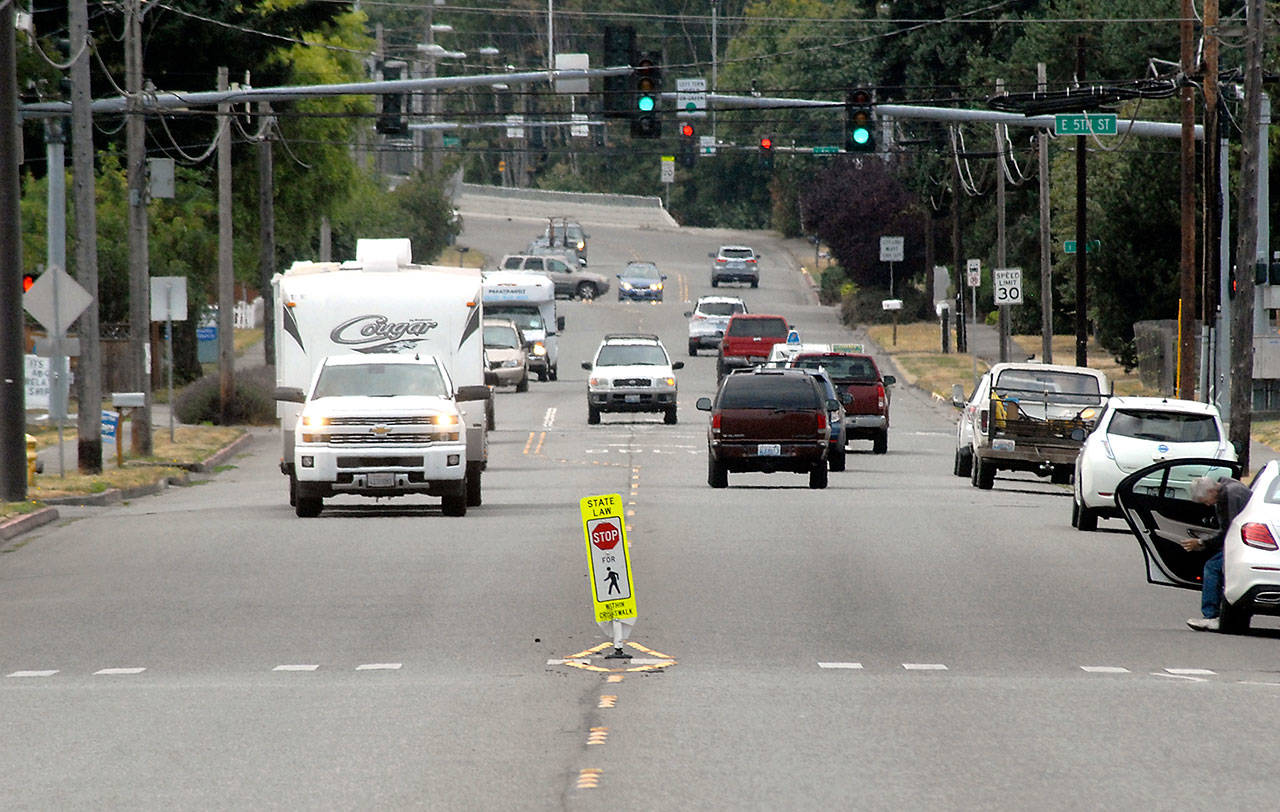PORT ANGELES — The gateway to Hurricane Ridge is getting a face-lift.
The city of Port Angeles plans to turn Race Street into a “multi-modal corridor” for pedestrians, bicyclists, vehicles and transit users, and it wants your input on the design.
A public forum on Race Street corridor design concepts is set for Tuesday, Sept. 12. The forum will be from 4 p.m. to 7 p.m. at the Port Angeles Senior &Community Center, 328 E. Seventh St.
City staff and a project consultant will be on hand to answer questions about design alternatives for the grant-funded project.
“This is an opportunity for residents, businesses and interested stakeholders to share their thoughts and provide feedback on the design efforts to date,” a city announcement said.
Meanwhile, the city is seeking public input on the Race Street design project through an online survey.
The community survey can be accessed on the city’s website, at www.cityofpa.us.
“We wanted to capture as much public input as we could and in as many different ways as we could,” said Ben Braudrick, assistant planner for the city of Port Angeles, in a Thursday interview.
There are two main options for the project. One has multi-directional bicycle lanes on either side of Race Street and the other has a 12- to 14-foot-wide shared-use trail, much like the Olympic Discovery Trail, on one side of the arterial.
Both concepts would narrow existing vehicle lanes and add planted buffers and sidewalks on both sides.
The project affects the 1.1-mile corridor between Front Street and the Olympic National Park Visitor Center.
The idea is to improve the connection between the Olympic Discovery Trail and Hurricane Ridge and to improve the safety and functionality of Race Street for motorists, cyclists, pedestrians and others.
“We’re trying to do this in a way that will support transportation for everybody from the age of 8 to 80,” Braudrick said.
The Race Street corridor was split into six sections to address existing uses and landscapes.
Later this year, the city and its consultant — Alta Planning of Seattle — will prepare construction documents with a preferred design alternative, city officials said.
The city received a grant from the Federal Lands Access Program to cover most of the $462,000 design cost, Braudrick said in an email.
The Race Street project qualified for the federal program because it will enhance access to Olympic National Park, Braudrick said.
Park officials are working closely with the city on how to manage the area around the Olympic National Park Visitor Center and support the Race Street project, interim park spokeswoman Penny Wagner said.
“It sounds like it will be a big improvement,” Wagner said in a Friday interview.
Narrowing the width of the vehicle lanes on Race Street will not reduce the level of service, or the volume of traffic that the road can handle, but it might reduce speed, Braudrick said.
The current speed limit on Race Street is 30 mph.
Both design concepts for the section of Race Street near Civic Field include a retaining wall at the edge of the stadium property, a 10-foot-wide sidewalk, a 5-foot-wide planted buffer and 7-foot-wide drop-off zone.
“The concept around Civic Field is trying to create more of a park-like atmosphere,” Braudrick said.
The online survey had garnered 55 responses as of Thursday.
Braudrick said the goal is to complete the design phase next spring and to construct the project in 2019.
“We’re really excited about it,” Braudrick said
“I think it’s going to be a great opportunity for Port Angeles, not only for local residents but for visitors as well.”
________
Reporter Rob Ollikainen can be reached at 360-452-2345, ext. 56450, or at rollikainen@peninsuladailynews.com.

